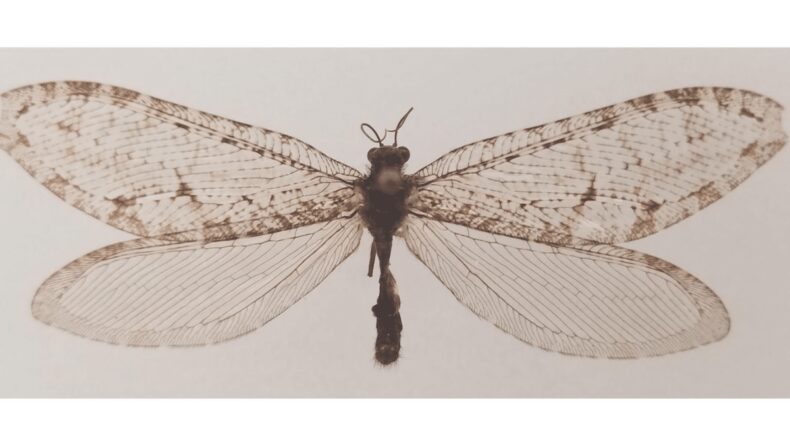In Arkansas, a University scientist unraveled an amazing finding outside of Walmart. Michael Skvarla, head of the Insect Identification Lab at Penn State University, discovered an unusual and enormous species on the building’s exterior on a normal milk run. Skvarla originally thought the insect was an antlion, but following careful examination years later, he realised it was a “super-rare” enormous lacewing from the Jurassic period. The record-setting insect was removed from the facade of a Walmart in Arkansas.It was scientifically termed as ‘Polystoechotes Punctata’, also known as the enormous lacewing.

Discovery of the insect
Skvarla discovered the specimen in 2012 when he went to Walmart to purchase milk, but he mistook it for something else. He did not learn what it was until 2020, when he offered an online course based on his own specimen collection. Prior to the COVID-19 epidemic, the real identity of the gigantic lacewing was unknown. It is the first specimen of its type to be documented in eastern North America in over fifty years, and the first record of the species in the state.
Research & Experimentation
Skvarla taught Entomology 432: Insect Biodiversity and Evolution at Penn State in the autumn of 2020 when he attempted to demonstrate the features of a species he had previously referred to as a “antlion,” but on further scrutinization realized that the characteristics did not quite match those of the dragonfly-like predatory insect. He felt that it resembled a lacewing or antlion. But the recognition of antlion was also incorrect since antlions have a wing span of around 50 millimeters while the sample’s was estimated around 2 inch.
The Missouri Department of Conservation reports that the insect has fragile, drab damselflies, lengthened bodies, four finely veined, brown-and-black mottled wings and clubbed or curled antennae about as long as the head and thorax combined.

Breakthrough
The finding was uncovered during a Zoom conference when students began to compare characteristics. The insect was indeed a great topic of discussion. Codey Mathis, a doctoral candidate in entomology at Penn State stated that they were seeing Dr. Skvarla describe the characteristics of the insects in detail via microscope, when he abruptly stopped. This was the turning point since it was the moment when it was collectively recognized that the bug was not what it was named, but rather a very uncommon enormous lacewing. The student too elaborately mentioned the exciting sensation of the realization that in the midst of an online lab course, a genuine discovery was made. Skvarla and his researchers examined molecular DNA to verify it.
Disappearance and possible presumptions
Skvarla said that the discovery of a huge lacewing in an urban region of Arkansas certainly exposes a larger tale about biodiversity and environmental change. According to him, the reasons for the loss of the gigantic lacewing from North America varied and remain mainly a mystery. According to the press release, if the insects depend on post-fire environments; the introduction of non-native predators such as large ground beetles; and the emergence of non-native earthworms, which radically change the proportion of forest leaf litter and soil. Scientists postulate that the insect’s extinction could be the result of an increase in artificial light and urban pollution, and the suppression of forest fires in eastern North America.
Conclusion
Skvarla’s finding shows how crucial it is to be perceptive and not immediately discount something just because it seems fascinating. Even the most mundane trip to the store has the potential to yield a major find in the annals of human achievement. Skvarla then made a secure deposit of the specimen into the collections of the Frost Entomological Museum at Penn State, where it will be available to researchers and students for years to come.














